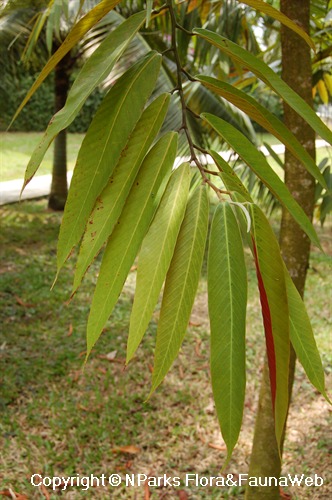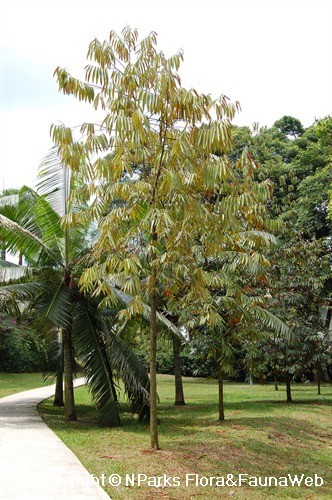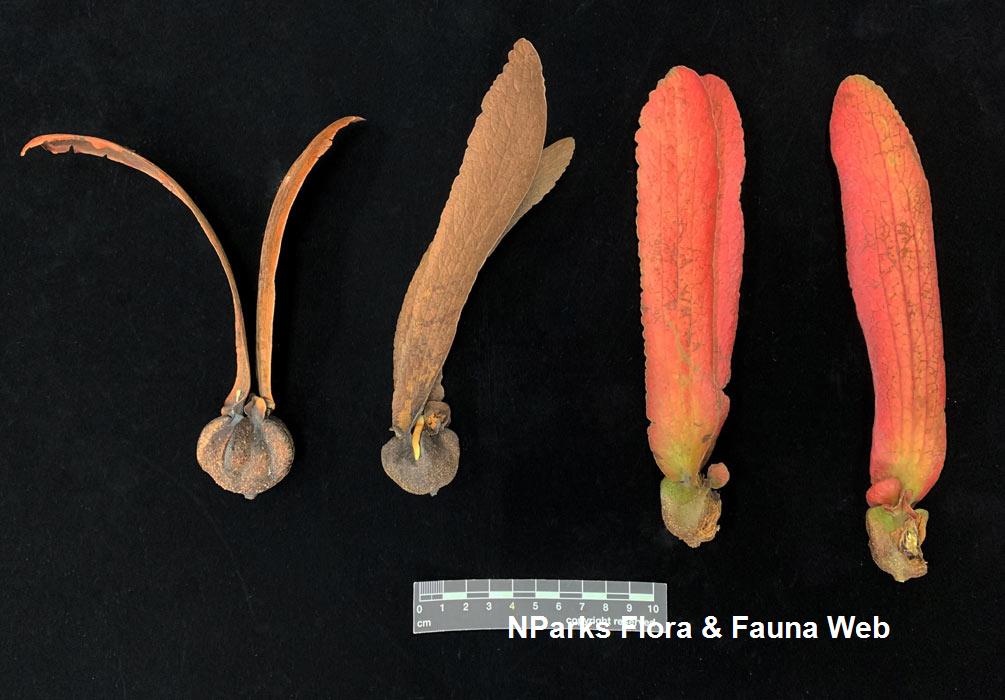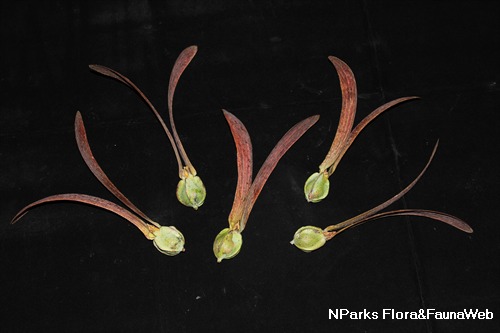_lowres.jpg)
Name
Classifications and Characteristics
| Plant Division | Angiosperms (Flowering Seed Plants) |
|---|---|
| Plant Growth Form | Tree |
| Lifespan (in Singapore) | Perennial |
| Mode of Nutrition | Autotrophic |
| Maximum Height | 30 m |
Biogeography
| Native Distribution | Borneo, Peninsular Malaysia, Thailand |
|---|---|
| Native Habitat | Terrestrial |
| Preferred Climate Zone | Tropical |
| Local Conservation Status | Non-native |
Description and Ethnobotany
| Growth Form | Large tree, able to grow up to 30 m tall in its natural habitat. |
|---|---|
| Trunk | Bark is reddish brown and surface flaky, girth size can reach up to 1.5 m wide. |
| Foliage | Green lanceolate to narrowly elliptic leaves, measuring about 14 - 18 cm long and 4 - 7 cm wide, nerves about 16 - 20 pairs, petiole about 2 cm long, stipule linear and about 10 - 15 cm long. |
| Flowers | Flowers borne on axillary and terminal raceme inflorescence up to 18 cm long, calyx cream in colour and tomentose, stamens 15 and shorter than the style. |
| Fruit | Fruit is a winged nut about 3 cm long, consisting of 2 long reddish-brown wings and 3 very short wings. |
| Habitat | Usually found on riverbanks. |
| Etymology | Genus Dipterocarpus is from Greek words "dipteros" which means "two-winged" and "karpos" which means "fruit" and they refer to the character of the fruit. Species oblongifolius means oblong-shaped leaf. |
| Ethnobotanical Uses | Cultural / Religious: Heritage Tree : There is currently one individual of Dipterocarpus oblongifolius listed as a Heritage Tree in Singapore. To find out more about this tree, please visit the Heritage Tree Register. |
Fauna, Pollination and Dispersal
| Seed or Spore Dispersal | Abiotic |
|---|
Plant Care and Propagation
| Light Preference | Full Sun |
|---|---|
| Water Preference | Moderate Water |
| Plant Growth Rate | Moderate |
| Propagation Method | Seed |
Foliar
| Mature Foliage Colour(s) | Green, Red |
|---|---|
| Foliar Attachment to Stem | Petiolate |
| Foliar Venation | Pinnate / Net |
Floral (Angiosperm)
| Flower Grouping | Cluster / Inflorescence |
|---|
Image Repository
Others
| Master ID | 1565 |
|---|---|
| Species ID | 2858 |
| Flora Disclaimer | The information in this website has been compiled from reliable sources, such as reference works on medicinal plants. It is not a substitute for medical advice or treatment and NParks does not purport to provide any medical advice. Readers should always consult his/her physician before using or consuming a plant for medicinal purposes. |

_lowres.jpg)
_lowres.jpg)
_lowres.jpg)
_lowres.jpg)
_lowres.jpg)
_lowres.jpg)
_lowres.jpg)



